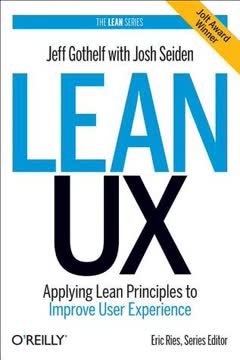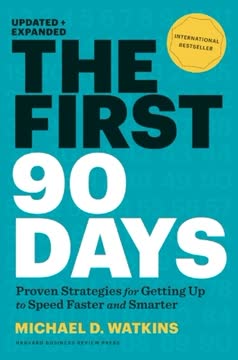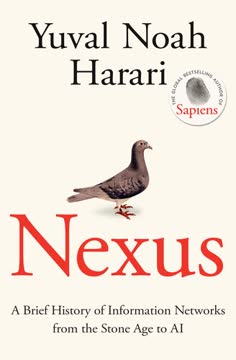Key Takeaways
1. Think big, start small: Set audacious goals and validate with small experiments
"Small is beautiful, but big is necessary."
Set audacious goals. Lean Impact challenges organizations to think beyond incremental improvements and instead aim for transformative change. This requires setting measurable, ambitious targets based on the true scale of the problem, not just what seems achievable with current resources.
Start with small experiments. While the end goal may be massive, the path to get there involves starting small and iterating rapidly. This approach allows organizations to:
- Reduce risk by testing assumptions early
- Learn quickly and cheaply before making large investments
- Avoid unintended negative consequences when working with vulnerable populations
Examples of this principle in action include:
- One Acre Fund's goal of serving 1 million farmers by 2020, achieved through continuous small-scale testing of new crops and techniques
- VisionSpring's journey from selling 800 pairs of glasses in 2003 to reaching millions through partnerships and system-level change
2. Love the problem, not your solution: Deeply understand user needs before designing interventions
"Being proximate matters even when working with populations near your home turf."
Get close to the problem. Effective social innovation requires a deep understanding of the people you aim to serve, their context, and the systemic issues at play. This means:
- Spending time in the communities you work with
- Engaging beneficiaries as active participants in the design process
- Using tools like ethnographic studies, journey mapping, and system mapping
Avoid assumptions. Our instincts and experiences can be misleading when working with populations different from our own. Examples of organizations that prioritized understanding before intervening include:
- Health In Harmony, which discovered that providing healthcare was key to forest conservation in Indonesia
- Proximity Designs in Myanmar, which integrates customers throughout the design process for agricultural tools
By focusing on the problem rather than a predetermined solution, organizations remain open to unexpected insights and potentially more impactful interventions.
3. Validate value, growth, and impact: Test assumptions for all three pillars of social innovation
"To realize social impact at scale, we need to deliver on all three."
Three pillars of social innovation:
- Value: Do users want and use the solution?
- Growth: Is there a sustainable path to reach all who could benefit?
- Impact: Does the intervention create meaningful positive change?
Organizations must validate assumptions for each pillar through experimentation. This often involves:
- Testing value through user engagement and feedback
- Exploring various growth engines (e.g., market-driven, government adoption, replication)
- Measuring both short-term outcomes and long-term impact
Examples of organizations validating across all three pillars:
- d.light testing customer preferences for solar lantern designs (value)
- Off Grid Electric proving its pay-as-you-go business model (growth)
- One Acre Fund rigorously measuring yield increases and income improvements (impact)
Failing to validate any one pillar can lead to solutions that are unused, unsustainable, or ineffective at addressing the core problem.
4. Iterate rapidly: Use build-measure-learn cycles to improve solutions quickly
"The most critical indicator of successful innovation is the speed of iteration."
Accelerate learning cycles. The faster an organization can complete build-measure-learn loops, the quicker it can improve its solutions. This involves:
- Creating minimum viable products (MVPs) to test key assumptions
- Collecting data and feedback quickly
- Making decisions based on evidence rather than hunches
Techniques for rapid iteration:
- Simplify MVPs to test one aspect at a time
- Use technology for faster data collection and analysis
- Break down long-term goals into shorter-term indicators
Examples of rapid iteration in action:
- Summit Public Schools redesigning its entire classroom model through weekly experiments
- CareMessage refining its health management system through text message tests with family members and clinic patients
Organizations should strive to reduce the time between iterations, even in contexts where full impact may take years to manifest.
5. Measure what matters: Focus on innovation metrics, not vanity metrics
"Vanity metrics have spread throughout the social sector like a communicable disease."
Avoid vanity metrics. Many organizations focus on metrics that sound impressive but don't drive decision-making or indicate real progress, such as:
- Total number of people reached
- Dollars raised
- Activities completed
Prioritize innovation metrics. These metrics measure progress at the unit level and can guide improvements:
- Adoption rate
- Cost per outcome
- Net Promoter Score
- Retention rate
Examples of innovation metrics:
- Harambee Youth Employment Accelerator tracking job retention rates
- One Acre Fund measuring yield increases per farmer
- Revolution English monitoring weekly practice time for language learners
By focusing on metrics that truly indicate progress toward the mission, organizations can make data-driven decisions to improve their interventions continuously.
6. Pursue multiple paths to scale: Explore various growth engines beyond traditional nonprofit models
"Scale is making the shift from linear to exponential growth."
Diverse paths to scale. Organizations should consider multiple strategies to reach massive impact, including:
- Market-driven approaches
- Government adoption or funding
- Replication and franchising
- Open-sourcing and commoditization
- Partnerships and shared infrastructure
Examples of innovative scaling strategies:
- VisionSpring partnering with BRAC's community health workers to distribute eyeglasses
- Code for America accessing government funding to scale its food stamp enrollment service
- PATH open-sourcing water filter designs to create a more competitive market
Organizations should identify and validate their "engine for growth" early, as it may significantly influence the design of their solution.
7. Embrace failure as a learning tool: Create a culture that celebrates calculated risks and pivots
"Innovation cannot exist without failure."
Reframe failure. In the social sector, fear of failure can lead to risk aversion and lack of transparency. Instead, organizations should:
- Differentiate between "good" failures (learning from calculated risks) and "bad" failures (avoidable mistakes)
- Create mechanisms to share and learn from failures openly
- Reward risk-taking and pivots based on evidence
Techniques for embracing failure:
- Hold "joyful funerals" or "fail faires" to celebrate lessons learned
- Include failure stories in regular team meetings and reports
- Set expectations with funders about the role of failure in innovation
Examples of organizations embracing failure:
- One Acre Fund's shift to small-scale testing after a large failed crop initiative
- The International Rescue Committee's Airbel Center for innovation in humanitarian aid
By creating a culture that values learning from failure, organizations can accelerate their progress toward impactful solutions.
8. Align funding with innovation: Seek flexible capital and outcomes-based funding models
"Making grants less restrictive and less prescriptive is an important first step towards building trust."
Challenges of traditional funding: Rigid grant structures often impede innovation by:
- Requiring detailed plans upfront
- Focusing on activities rather than outcomes
- Discouraging experimentation and pivots
Innovative funding approaches:
- Unrestricted funding: Allows organizations to allocate resources flexibly
- Tiered funding: Provides increasing support as evidence of impact grows
- Pay-for-success models: Tie funding to achieved outcomes
- Blended finance: Combines philanthropic and investment capital
Examples of aligned funding:
- The Edna McConnell Clark Foundation's shift to providing flexible growth capital
- Development Impact Bonds for education in India
- The Rise Fund's $2 billion impact investment fund
Both funders and recipients must work to create funding structures that enable and incentivize innovation for greater impact.
9. Transform systems, not just symptoms: Address root causes through collaborative efforts
"To tackle both long‐standing social ills and new challenges, 193 of the world's leaders came together at the United Nations in 2015 to adopt a shared vision – the Sustainable Development Goals (SDGs)."
Move beyond individual interventions. Many social challenges cannot be solved sustainably by any single organization or solution. Instead, focus on:
- Understanding and mapping complex systems
- Identifying leverage points for change
- Building coalitions across sectors
Strategies for systems change:
- Multi-stakeholder initiatives
- Policy advocacy and reform
- Market-based approaches to address market failures
- Building shared infrastructure and platforms
Examples of systems-level approaches:
- EYElliance bringing together government, industry, and nonprofits to tackle global vision care
- Alliance for Affordable Internet advocating for policy changes to reduce internet costs
- Freedom to Marry's coordinated campaign to legalize same-sex marriage in the US
By addressing root causes and transforming systems, organizations can create more sustainable and far-reaching impact.
10. Bridge the hybrid gap: Blend profit and purpose with new entity structures and financing
"We are at an extraordinary moment in the evolution of our society, a point at which charitable entities are increasingly embracing business‐oriented approaches to expand their scale and impact, while companies are increasingly recognizing the need to balance profits with their benefit to society."
The hybrid gap. Traditional nonprofit and for-profit structures often fall short for organizations seeking both financial sustainability and maximum social impact. New approaches include:
Entity structures:
- Benefit corporations
- Low-profit limited liability companies (L3Cs)
- Community interest companies (CICs)
Financing mechanisms:
- Impact investments
- Blended finance funds
- Outcomes-based financing
Examples of bridging the gap:
- Omidyar Network's flexible deployment of grants and investments
- Village Enterprise's Development Impact Bond for poverty alleviation
- B Lab's B Corp certification for socially responsible businesses
By developing new hybrid models, we can unlock greater resources and align incentives to drive social innovation at scale.
Last updated:
FAQ
What's Lean Impact about?
- Focus on Social Innovation: Lean Impact by Ann Mei Chang explores applying lean startup principles to social good, aiming to maximize social benefit in complex environments.
- Three-Part Structure: The book is divided into three parts: Inspire, Validate, and Transform, guiding readers through setting audacious goals, validating solutions, and transforming systems for greater impact.
- Real-World Examples: It includes numerous case studies from organizations worldwide that have successfully implemented lean methodologies to create significant social change.
Why should I read Lean Impact?
- Practical Framework: The book provides a practical framework for social entrepreneurs, funders, and nonprofit leaders to innovate effectively, combining scientific rigor with entrepreneurial agility.
- Addressing Real Needs: It encourages focusing on understanding the needs of beneficiaries rather than just delivering services, ensuring solutions are relevant and effective.
- Inspiring Stories: Readers will find motivating stories of organizations that have navigated challenges and achieved significant results, inspiring them to apply similar strategies.
What are the key takeaways of Lean Impact?
- Think Big, Start Small: Emphasizes starting small to validate ideas while keeping a vision for larger goals, allowing for learning and adaptation before scaling solutions.
- Relentlessly Seek Impact: Focus on the problem rather than the solution, encouraging flexibility and responsiveness to beneficiaries' needs.
- Iterative Learning Process: Advocates for continuously testing assumptions, gathering data, and refining approaches based on real-world feedback.
What is the Lean Impact methodology?
- Hypothesis-Driven Experiments: Involves formulating hypotheses, testing them through experiments, and using results to inform decisions, reducing risk and accelerating learning.
- Minimum Viable Product (MVP): A simplified version of a product or service used to test assumptions quickly and cheaply, allowing for feedback and adjustments before full-scale implementation.
- Build-Measure-Learn Cycle: Central to the methodology, where organizations build a prototype, measure its effectiveness, and learn from results to improve offerings continuously.
How does Lean Impact define social innovation?
- Improving Solutions: Defined as developing better solutions to social and environmental challenges through iterative testing and improvement.
- Focus on Outcomes: Prioritizes measurable outcomes rather than just activities, ensuring interventions lead to meaningful change.
- Engagement with Beneficiaries: Highlights the importance of engaging with beneficiaries to understand their needs and preferences for designing effective solutions.
What are some barriers to social innovation mentioned in Lean Impact?
- Funding Constraints: Strict funding requirements often limit the ability to experiment and innovate, with traditional grant models enforcing rigid planning and execution.
- Misalignment of Interests: Disconnect between beneficiaries' needs and funders' priorities can lead to ineffective interventions.
- Cultural Resistance: Cultural barriers within organizations may resist change or innovation, hindering a culture of experimentation and learning.
What is the importance of setting an audacious goal in Lean Impact?
- Guiding Vision: An audacious goal serves as a North Star, providing a clear vision of the change an organization seeks to create.
- Encouraging Innovation: Aiming high encourages creative thinking and exploration of new solutions, fostering a culture of innovation and risk-taking.
- Measurable Outcomes: Clear, ambitious targets allow for effective measurement of progress and success, focusing efforts on achieving meaningful results.
How does Lean Impact suggest organizations validate their solutions?
- Customer Engagement: Engage with target customers to understand their needs and preferences, ensuring solutions are relevant and desired.
- Iterative Testing: Start small, gather feedback, and refine solutions based on real-world data, minimizing risk and maximizing learning.
- Data-Driven Decisions: Collect and analyze data to assess effectiveness, establishing clear success criteria to measure progress and make informed decisions.
What role do funders play in the Lean Impact framework?
- Support for Innovation: Funders are encouraged to adopt flexible funding models that support experimentation and innovation, including providing unrestricted funding.
- Collaboration with Organizations: Emphasizes collaboration between funders and organizations to align goals and priorities, supporting learning processes.
- Focus on Outcomes: Funders should prioritize funding based on outcomes rather than activities, encouraging organizations to focus on delivering meaningful impact.
What are minimum viable products (MVPs) in Lean Impact?
- Definition of MVPs: Simplified versions of a product or service designed to test specific hypotheses with minimal resources, allowing for quick feedback and learning.
- Types of MVPs: Includes concierge MVPs, where services are provided manually, and Wizard of Oz MVPs, where the backend is simulated to gauge user interest.
- Importance of MVPs: Helps avoid developing full solutions without understanding user needs, reducing risk and accelerating learning.
What is the significance of the theory of change in Lean Impact?
- Mapping Causal Linkages: Outlines expected relationships between activities and outcomes, helping articulate assumptions and identify testing needs.
- Five Stages of Theory of Change: Inputs, activities, outputs, outcomes, and impact guide planning and evaluating interventions.
- Validation of Assumptions: Allows systematic testing of assumptions, refining strategies, and improving chances of success.
What are the best quotes from Lean Impact and what do they mean?
- “Start small and think big.”: Emphasizes beginning with manageable experiments while keeping a vision for larger goals, validating ideas before scaling.
- “Relentlessly seek impact.”: Reminds to prioritize meaningful outcomes over superficial metrics, focusing on real differences in people's lives.
- “Innovation flourishes when we each focus on our unique value add.”: Highlights collaboration and leveraging diverse strengths in pursuing social good, encouraging organizations to work together for maximum impact.
Review Summary
Lean Impact receives high praise for applying Lean Startup principles to social innovation. Readers appreciate its practical approach, real-world examples, and emphasis on thinking big while starting small. The book encourages rapid experimentation, data-driven decisions, and a focus on measurable outcomes. It challenges traditional nonprofit models and funding mechanisms, advocating for more innovative and scalable solutions. While some find it repetitive or US-centric, most consider it a valuable resource for social entrepreneurs, funders, and anyone interested in maximizing social impact.
Similar Books










Download PDF
Download EPUB
.epub digital book format is ideal for reading ebooks on phones, tablets, and e-readers.




